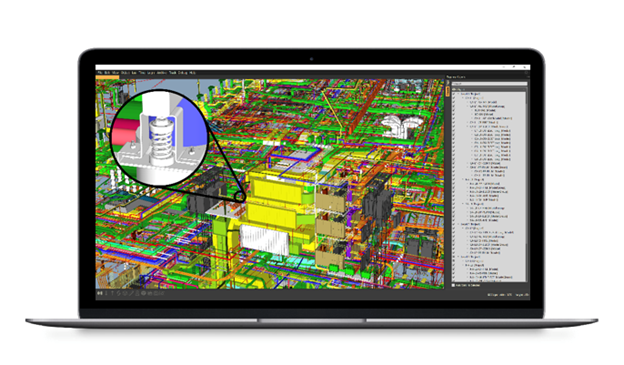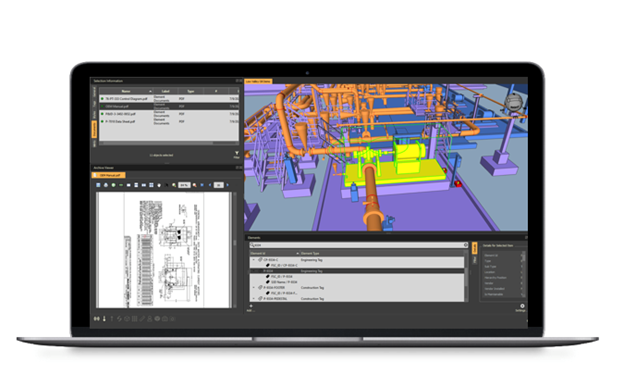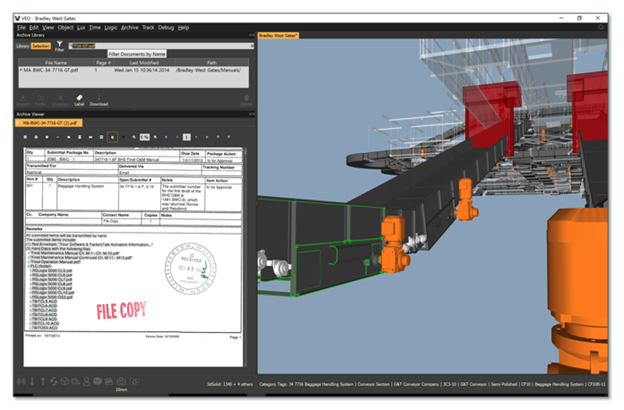As capital projects become more complex, we know that managing these costly assets means bringing crucial data — and people — together in new and better ways. Doing so increases accuracy and heightens collaboration. And, by collecting data throughout the construction execution phase, owners can even get real-time insight into the status of their projects.
Technologically, the industry has advanced to the point that owners and contractors should be able to collaborate on software for asset management and closeout through a 3D model. Such a solution can help contractors and owners manage this equipment handover and continuous project closeout. Let’s explore this tool, how it works and what to look for when choosing the right solution for your particular business needs.
Linking Data and Leveraging 3D Models
Ideally, you want to center your common data environment (CDE) around your model. Therefore, you’ll need accessible visualization software that enables a CDE to tie together project information from various sources, such as modeling software, handover activities and spreadsheets.

Some features to look for include:
- Adaptability for use before and during construction
- Built to meet owner and operations needs after construction
- Unlimited user access for all parties on projects
- Optimal for post construction archiving and creation of a digital twin
It’s also important to provide tools with which to coordinate throughout construction and operations from an aggregate view of all 3D models using a high-performance 3D viewer.
This will allow any team member with permissions to access vital project information and navigate to and visualize each revision of your 3D environment. You should be able to do this by using advanced searching capabilities through tags, areas, handover packages and more to find exactly what you’re looking for.
Today’s best modeling tech also offers spatial coordination and clash detection so project teams can identify, assign, and track coordination issues through resolution in the aggregated 3D environment, and quickly visualize problem areas and issue status within the latest project model.
By tracking quantities and pushing changes to your estimating solution, you can keep quantity information up-to-date throughout design changes.
And with an integration to the right Advanced Work Packaging solution, you can also create and manage work packages in your model, visualize planned scope and sync back to your plan solution to manage field execution.
Creating the Right Context
Your ideal asset Information model will also provide documents and data within the context necessary to quickly serve up relevant information to project and operations teams. If you track construction execution with software such as InEight Model and InEight Completions, for example, the asset model actually builds itself with intelligent links to data and documents. So, if you can’t start tracking execution from the beginning, you can still accelerate handover using a data transformation process to normalize asset information and automate links to relevant project files.

Asset Information can also be captured from model authoring tools, handover deliverables, startup and commissioning activities, or from external databases using a generic Microsoft Excel® plugin. This enables data collection during any project phase from any team member with permissions.
A visual reporting solution within your software can offer a fool-proof way to light up your model to visualize construction status, coordination hot spots, handover schedule, warranty dates or any other tabular data related to your assets.
Making Information Accessible – To Everyone
If different systems are utilized by the contractors, engineers, owner’s reps and the owner on a project, then what you have is not truly a common data environment. Therefore, it is important that all stakeholders of a project have access to the BIM solution in order to centralize collection and storage of all project information. This allows for real-time information updates to be utilized by all parties at the same time, helping to streamline access to vital information during later stages in the project and after handover.
Getting into the right modeling solution shouldn’t require a BIM “super user.” With one-click views called master presets, items can be created and organized to make it easy to share important model updates, isolate systems and areas and even bring up training documents and videos.
In the field, teams don’t have to worry about searching through a database or fat fingering tag numbers anymore either. With today’s mobile solutions, you can scan a QR code to quickly jump to a pump, hot water system or even to a room within your facility. Once you’ve found your asset in this way, your team will have access to the latest information and will be able to quickly browse operations and maintenance manuals right from the field.
Owners and operations teams can use workflows during and after construction to ensure project requirements are being met by managing issues and inspections across all project teams.
You’ll also want to look for features like a care and preservation solution so you can plan and execute preservation activities for the lifetime of your asset while keeping relevant data up-to-date.
Telling the Complete Story
Today’s more advanced solutions provide better project certainty throughout the entire project life cycle including operations of your facility. This is done by allowing teams to manage a dynamic set of assets and scope items throughout execution, and by providing a framework and set of automation tools that can be used to create an intelligent inventory of inspections, tests and various checklists related to your asset list.
The right mobile solution allows rapid issue capture for even the most complex business process workflows, including the management of defects, punch lists, NCRs and any other operational issue that may need to be tracked.
If you can bookmark PDF reports as well, generated at any level in your chosen quality and commissions application, every record captured throughout the quality, construction, commissioning and handover process can be neatly packaged for archival and handoff to operations.
Wrapping It All Up – Visualizing, Executing and Operation

To sum it up, your best model-centric CDEs should be able to help you:
- Build your asset library from any source
- Visualize project status directly in the model
- Track and execute construction and handover activities
- Quickly find and view linked data and documents
- And leverage workflows to support operations and maintenance activities with preservations, inspections and operational issue management
Today, collecting data throughout construction execution is allowing owners to get real-time insight into the status of their projects across their portfolio and more easily navigate between project phases without losing valuable information. By knowing what features and capabilities to look for when assessing and choosing your best 3D collaboration solution, you can start experiencing your own project transparency on a new level for more project wins, more often.
Ready to take a deeper dive? Schedule a demo to see how InEight could help get your construction business where it needs to go.




